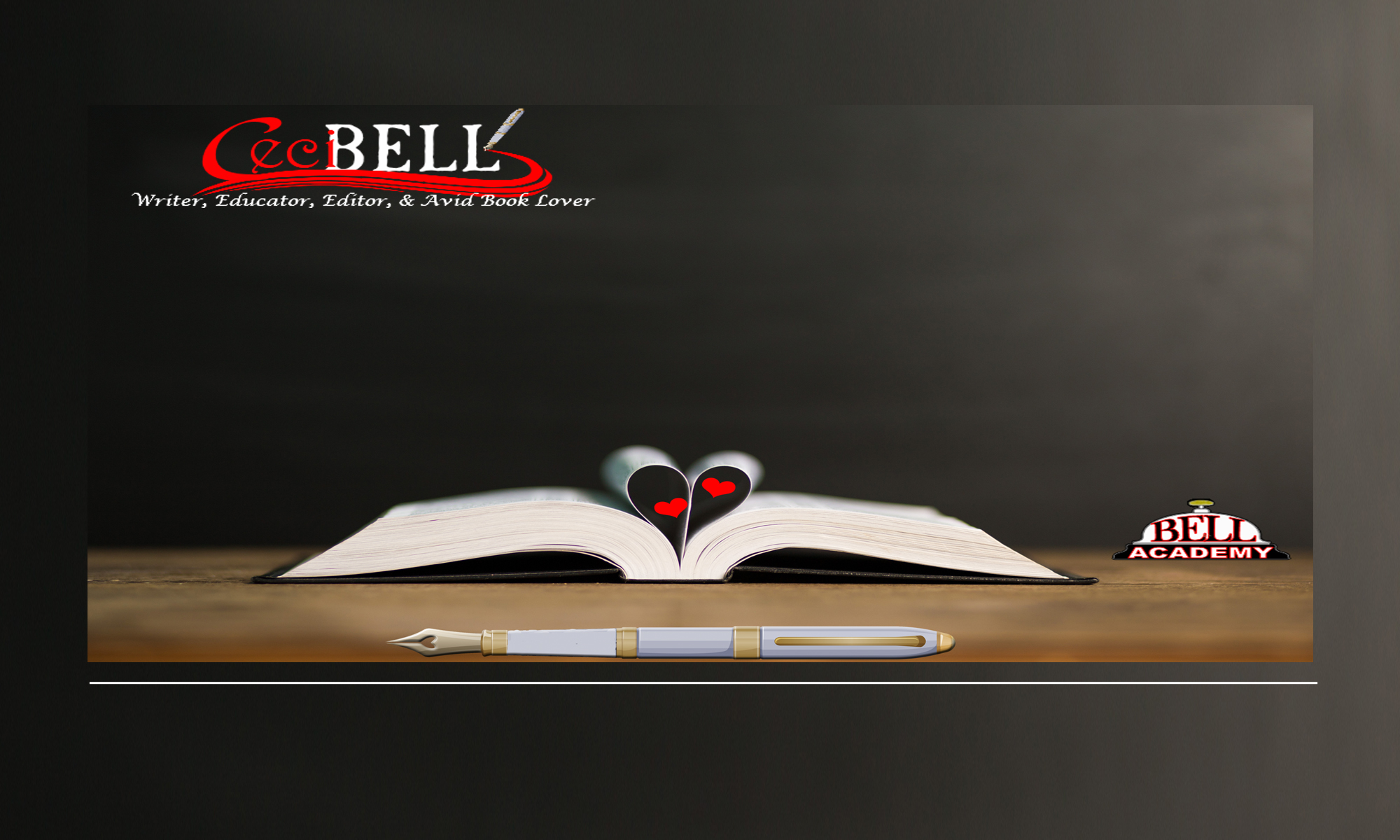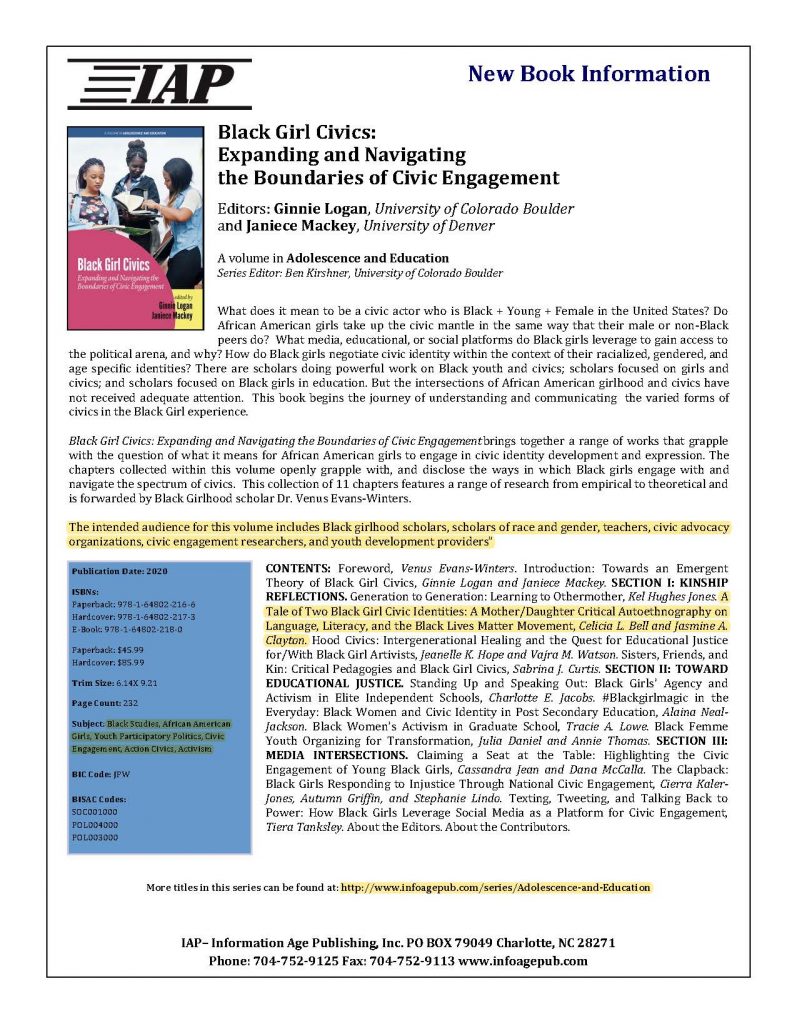Currently reading two books with common themes:
Black Girls Must Die Exhausted By Jayne Allen (2021)
The Other Black Girl By Zakiya Dalilan Harris (2021)

Writer, Educator, Editor, & Avid Book Lover
Currently reading two books with common themes:
Black Girls Must Die Exhausted By Jayne Allen (2021)
The Other Black Girl By Zakiya Dalilan Harris (2021)
I started reading The Other Black Girl by Zakiya Dalilan Harris (2021). The prologue opens in 1983, so I am curious how that relates to the current action in the book set to 2018. Good lead in hook. Engaging opening. Suspenseful. Things to follow: the symbolism in Black hair.
Part I: Goes with the title. Building anticipation for the other Black girl. In society the other Black girl in predominately White spaces is a major theme in Black girls’ and women’s lives. Things to follow: “Very Specific People” – who are they?
Protagonist: Nella
Chapter 2 – I hear Jordan Peele soundtrack in anticipation lol. I get creepy vibes from the back cover summary and the opening quote about how Black history is horror. Things to follow: Black Female Experiences
Stay tuned! Join me in reading books by Black authors!
–Ceci
I started reading The Sweetness of Water today and from page one I assumed the characters were Black until I got to the second page when Negroes were mentioned. I mean, the 200 acres of land had given me pause, but I guess since I knew the premise of the book and that the author was Black, that’s how my mind entered the scene of the novel.
Positionality is important.
Why did the author not find it relevant to racialize the White character? Why does Whiteness continue to be the default position?
Chapter 2 is from George’s wife, Isabelle’s, perspective, the perspective of the White man. Since this novel is about emancipation, the end of the civil war, and Reconstruction, and I assumed correcting American history. Why? Curious to see where this goes ….
The Amazon.com summary of the book’s premise opens with ” In the waning days of the Civil War, brothers Prentiss and Landry—freed by the Emancipation Proclamation—seek refuge on the homestead of George Walker and his wife, Isabelle. The Walkers, wracked by the loss of …. Prentiss and Landry, meanwhile, plan to….”
The New York Times bestselling book is an Oprah’s Book Club pick and was on President Barack Obama’s 2021 summer reading list.
I’ve been intending to read the book What Was African American Literature? for years because I was curious about Kenneth Warren’s premise that African American literature was during a very short period that started during the Jim Crow era. This book was published in 2011; I wonder how his premise holds up in 2021. I can get down with calling contemporary literature by Black authors, African diaspora literature. Warren writes that “With some significant qualifications, I am arguing here that, mutatis mutandis, African American literature as a distinct entity would seem to be at an end, and that the turn to diasporic, transatlantic, global, and other frames indicates a dim awareness that the boundary creating this distinctiveness has eroded …. I can buy this notion.
Let’s see….
This will be an exploration….
Questions to ponder….
1. In light of Warren’s premise, how are these texts taught in K-12 schools?
2. So, what is the current African Americanist literary project? I will contemplate whether or not Black writers still write for the good of the race in fiction; in nonfiction the answer is yes.
3. What about now after the faux post racial era?
4. What is the treatment of racial identity and collective trauma in literature by Black authors?
5. What is the role of literacy in a conceptualization of the purposes or necessity for labeling Black literature.
I think literature is the documentation of how people live, think, and know. It’s a reflection of what was going on in a certain time period. Analyzing contemporary Black authors can reveal important truths about our racialized experiences in society.
References
Warren, K. W. (2011). What Was African American Literature? (Vol. 10). Harvard University Press.
Jenee Osterheldt, a Boston Globe writer has debuted a new series called “A Beautiful Resistance, which examines Black lives and Black joy beyond just sharing Black hardships.
New from culture columnist @SincerelyJenee: A Beautiful Resistance, a celebration of Black joy and Black lives. https://t.co/YdVft4wHPi pic.twitter.com/tEwFWYHOCl
— The Boston Globe (@BostonGlobe) October 28, 2020
A Beautiful Resistance (bostonglobe.com)
This is pretty cool. I just mentioned President Obama’s writing process the other day in my reflection blog post about his new book. Read along with me here.
I pre-ordered President Obama’s new book, A Promised Land. When it automatically downloaded to my Kindle at 12 a.m. on the dot this morning, I was super excited. Please feel free to join along with me in reading his 752-page what-is-sure-to-be-a-masterpiece, part I of his presidential memoirs. President Obama’s epigraph includes an African American spiritual that was clearly the inspiration for his book’s title and a Robert Frost quote. The book is broken down into seven parts: “The Bet,” “Yes We Can,” “Renegade,” “The Good Fight,” “The World as It Is,” “In the Barrel,” and “On the High Wire.” President Obama is such a great writer and storyteller. Let’s get started on my reading reflections….
Reading the opening lines of President Obama’s preface is refreshing because he acknowledges that he may not have accomplished everything that he wanted to as president. For me personally, it’s frustrating that some people who criticize him do not seem to realize that as president, it’s not humanly possible to accomplish all things and that you have to work within the constraints of the office and the supposedly three branches of government along with the politics of a divided government that was explosively divisive after the election of our first Black president.
As a writer myself, it’s supercool that he shared a glimpse of his writing process: “with a pen and yellow pad (I still like writing things out in longhand, finding that a computer gives even my roughest drafts too smooth a gloss and lends half-baked thoughts the mask of tidiness)” (p. xiii). My first thought was who will have to type up his notes? lol. As a writing instructor, that is a great line “too smooth a gloss and lends half-baked thoughts the mask of tidiness” (p. xiii). I often remind my students that a con of using word processing software is that we automatically are thrust into the editing process, instead of just letting the words pour onto the page for later revision—that the first draft is rarely (more likely never) the last draft. No matter how much I try to encourage the revision process with multiple drafts, students resist that notion and often turn in final drafts that are really first drafts with a few minor tweaks here and there just because, with no real intentionality.
Friday, November 20, 2020
President Obama wrote that he wanted to do more than give a “historical record of key events” (p. xiii), that he wanted to also give an “account of some of the political, economic, and cultural crosscurrents that helped determine the challenges” (p. xiii) that occurred during his presidential watch. I’m most interested in the cultural crosscurrents and I’m looking forward to reading about his take on the current racial climate in the country. This volume covers his first term so I have to think back to what was going on from 2009 to 2012 (and also 2008 during his presidential campaign).
Exciting news for me and my daughter! We co-wrote a book chapter in the following book (flyer pictured). Our chapter is titled “A Tale of Two Black Girl Civic Identities: A Mother/Daughter Critical Autoethnograpy on Language, Literacy, and the Black Lves Matter Movement”
Click here for ordering details on the publisher’s website.
Also available on Amazon in paperpack or hardcover.

In the introduction to this chapter of Caste: The Origins of Our Discontents, Isabel Wilkerson compares anthrax to the poisonous hatred that has run rampant throughout our society in recent years. I believe, like many others, the election of the first Black president, Barack Obama, ripped the bandage off of the hidden-under-a-rock (or behind a white sheet) racism and race hatred of the faux postracial society of the 1990s. She writes that “The anthrax, like the reactivation of the human pathogens of hatred and tribalism in this evolving century, had never died. It lay in wait, sleeping, until extreme circumstances brought it to the surface and back to life” (p. 3). She mentions that even though many of us do not want to believe it, America has always been this way even though we feign ignorance and pretend not to recognize it. I say, some of us pretend because our privilege allows us to; others of us pretend so that we can put one foot in front of the other in our daily walk among the minoritized populations who have to keep on keeping on in spite of the collective, cultural trauma of our present circumstances and histories.
Wilkerson goes on to summarize the presidential contest between Hillary Clinton and Donald Trump, although she does not call them out by name, instead providing easily recognizable details and character traits.
This blog post is part of a series of personal reading responses to contemporary and traditional literature written by Black fiction and nonfiction authors.
add
Part One: Old School
Chapter 1
I am so excited to be reading Angie Thomas’ follow up novel to The Hate U Give. It is so refreshing reading books with characters that look like me and my people. From the opening page, Thomas is drawing me in with details like a teacher who wears her hair in Sisterlocks (Mrs. Murray) and is reading the great poet Nikki Giovanni.
The protagonist is a high school junior named Brianna Jackson (Bri or Breezy). Her father was murdered 12 years ago. Her mother was a recovering drug addict, eight years sober. She lives in Garden Heights like Starr did. Brianna’s dad was a rapper, “Lawless, the underground rap legend” (p. 9)